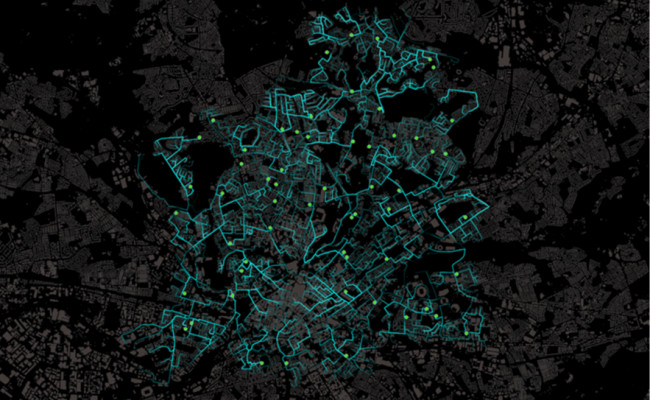

With data playing an increasingly significant role in decision making and strategic planning, London is at the forefront of data innovation. At the heart of this is open data hosted on platforms such as the London Datastore and the Planning London Datahub. This availability of data means that London is in a strong position to not only respond to the challenges currently facing urban areas, but to thrive in the wake of the Covid-19 pandemic.
Like many cities, Covid-19 exacerbated many of the challenges already facing local high streets and town centres by changing the way we work, socialise, shop and travel. Physical commutes have been replaced by home working, the shift towards e-commerce and home delivery services has accelerated, and an increase in active travel of up to 46% (TfL) has been observed across the capital. This means there is an urgent need to reassess how we view the role that local high streets and town centres play in creating vibrant, thriving communities.
With fewer people commuting into central London, there is an opportunity for local town centres to be transformed into hubs where residents can shop, work, and socialise. 90% of Londoners live within 10 minutes of their local high street; revitalising these high streets with a focus on mixed-uses will allow residents to access all their essential needs within a short walk of their homes.
Ensuring this new local way of life persists beyond the immediate future will depend upon the availability of a range of amenities within local town centres. Data will be key to achieving this. The Planning London Datahub contains detailed information on development proposals throughout London’s 32 boroughs. In isolation, these data can be used to understand which areas are attracting significant investment. Likewise, data relating to mobility during Covid-19 are available via the London Datastore and provide information on the impact of the pandemic on movement throughout London with visits to retail areas, transport stations and workplaces declining by an average of 45-50% over 2020, whilst visits to parks experienced an increase of over 30% across the year.
However, unlocking the real potential of these data relies upon triangulation with other data sources. This can range from open demographic data from the UK Census and spatial data from platforms such as OpenStreetMap and Ordnance Survey, to the wealth of built environment data created as a by-product of the numerous projects Atkins have undertaken in the capital. Utilising data from multiple sources allows us to move beyond generic insights and begin to fundamentally understand why some areas have recovered more successfully than others, what role the built environment plays in this, and how we can support high streets and town centres to thrive in a post-Covid London.
For example, combining data from the Planning London Datahub with the data hosted by the London Datastore alongside openly available spatial data can enhance our understanding of how the availability of amenities in different areas impacted how attractive these were to residents both during and after Covid-19 restrictions. Implementing tools developed by Atkins can allow us to utilise these insights to make real-world decisions. The Brownfield Site Selector Tool allows us to assess the proximity of key amenities to potential development sites. Currently, these key amenities are green spaces, retail centres, schools and transport. The results of analyses like the one outlined above could tell us which amenities are particularly attractive to residents and should therefore be included in the tool and given greater weighting when deciding on future development sites. This is an example of how making full use of the range of data and tools available can produce powerful insights and assist strategic planning.
With the amount of data produced growing exponentially, harnessing the potential of these data should be a priority for all. However, with much of these data fragmented across institutions, effectively utilising the range of available data will rely on collaboration between the private and public sectors with a strong focus on open data access. This can ensure that data are placed at the heart of decision making and strategic planning as London emerges from the worst of the Covid-19 pandemic. By placing a strong emphasis on collaboration and data sharing, the wealth of data already available places the capital’s communities in a strong position to continue to prosper in the wake of the Covid-19 pandemic and beyond.